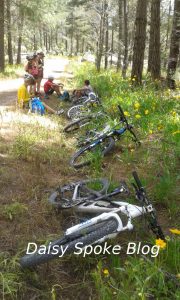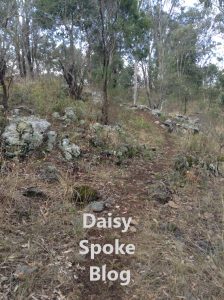
This blog post summarises some of the information shared in a recent ROUND THE TABLE mini-workshop. To sign up for information about future workshops, click here: https://www.condamineassist.com.au/wp/mailing-list-sign-up/
Buildings don’t stand up for long without a strong foundation. Mental health and wellness are no different. By strengthening the foundation stones, we create greater resilience so that when life gets tough, we’re better able to weather the storms without crashing down.
 So, what are these foundation stones of wellness? There are four main foundation stones that I work on with my clients as well as in my own personal life. Each of the stones support each other – they are interlinked – and they are a fabulous place to start building or renovating wellness at any time! The foundations are based on solid evidence that is routinely used in the mental health sector.
So, what are these foundation stones of wellness? There are four main foundation stones that I work on with my clients as well as in my own personal life. Each of the stones support each other – they are interlinked – and they are a fabulous place to start building or renovating wellness at any time! The foundations are based on solid evidence that is routinely used in the mental health sector.
1. Movement
The latest Physical Activity and Sedentary Behaviour Guidelines can be found here:
http://www.health.gov.au/internet/main/publishing.nsf/content/health-pubhlth-strateg-phys-act-guidelines
 Basically, people are designed to move … a lot. When we don’t move enough, we are at greater risk of switching into a depressed or anxious state. It’s simple biology. Get moving, get active, get off the sofa, and move as much as you can and often as you can. For most of us it’s recommended to aim for about an hour of moderate intensity exercise or activity each day, and limit our screen time to 2 hours per day. The combined mental and physical health benefits of exercise / activity cannot be replaced by any medication. If you are in pain, or have limited movement, injuries, or chronic disease, the best idea is to do what you can. Remember always check with your doctor or health professional if you have any concerns about your health, exercise, and resting needs.
Basically, people are designed to move … a lot. When we don’t move enough, we are at greater risk of switching into a depressed or anxious state. It’s simple biology. Get moving, get active, get off the sofa, and move as much as you can and often as you can. For most of us it’s recommended to aim for about an hour of moderate intensity exercise or activity each day, and limit our screen time to 2 hours per day. The combined mental and physical health benefits of exercise / activity cannot be replaced by any medication. If you are in pain, or have limited movement, injuries, or chronic disease, the best idea is to do what you can. Remember always check with your doctor or health professional if you have any concerns about your health, exercise, and resting needs.
 2. Sleep
2. Sleep
Sleep is often a problem that arises when something else (in fact, anything else!) isn’t quite right. Good quality sleep is needed for restoration of our minds and bodies. Sleep problems include too much, too little, and interrupted sleep, as well as feeling fatigued on waking. There are plenty of things you can do to try to improve your sleep, but remember that there is a huge variation of what is considered ‘normal’. First of all, there are some health issues which may be contributing such as sleep apnoea, snoring and medication. If you suspect these to be problems, check with your doctor. How much caffeine, alcohol and tobacco are you using? How are you managing your everyday stresses? Your relationships? Issues with pain management or other health issues? Is you mind staying awake when your body is trying to sleep? Are you able to rest peacefully even if you can’t sleep? What routine do you use to prepare for sleep? Are you relaxing and de-stressing during the day? The list is almost endless!
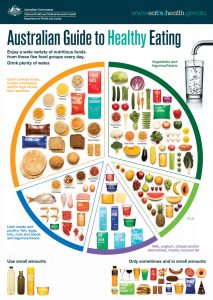 3. Nutrition
3. Nutrition
There’s some value in the old sayings “You are what you eat” and “Healthy body, healthy mind”, although I acknowledge it’s not quite as simple as that! When it comes to nutrition in the media, it can be very confusing. So, let’s cut to the evidence-based framework that’s used by dieticians in Australia. These guidelines provide clear direction about what and how much we need to eat to reduce the risk of disease and illness. Many people I work with are surprised when they realise how much 1 serve of vegetables looks like, and the proportions of the different food groups we need to aim for each day. A dietician once said to me that we should all aim to eat a rainbow everyday, if not at every meal, so this is another tip I often share to encourage people to eat a wide variety of foods. Some nutrients are thought to assist with mood management and sleep, but for most of us, we’ll be getting these simply by eating a well balanced diet. Oh, and don’t forget to limit your alcohol consumption and drink plenty of water! And check the guidelines here: https://www.eatforhealth.gov.au
 4. Mind
4. Mind
Mind health encompasses basically everything about life and living that is not visible – thoughts, feelings, spirituality, beliefs, assumptions, self-awareness, attachments to things / people / places, and inner skills to manage our mood and behaviours. And that’s just to name a few! Mindfulness skills training is a valuable component of mind health. This is something that everyone can practise either formally (eg using mindfulness meditation) or informally (eg noticing with curiosity and without judgement what you see, hear, feel, taste, smell while eating lunch). Practices such as these train our minds to pay attention to what is happening internally and externally. We come to notice the patterns of thinking and behaving that we automatically engage in. And with this knowledge comes the power of choosing something else.
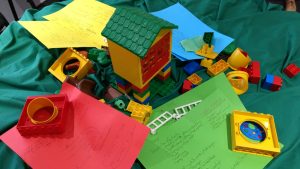
So, the next time you notice you’re feeling down or anxious, check your foundation stones and make the adjustment you need. Strengthening one foundation stone will strengthen the whole structure, but to maximise resilience overall, you’ll need to work on all four of them. If you don’t have the skills to do this yourself, ask for help. Team up with your doctor or health professional to build the best YOU that’s possible!


 Kathryn Walton shares information and reflections in Daisy Spoke that connect, inspire and self-empower women to make healthy choices for themselves.
Kathryn Walton shares information and reflections in Daisy Spoke that connect, inspire and self-empower women to make healthy choices for themselves.
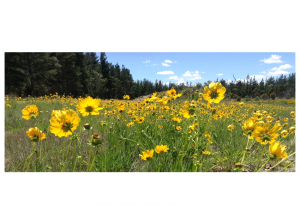
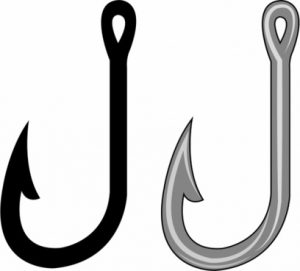 thought, we often don’t even realise that we’ve grabbed hold of it. We can become firmly attached to it and we can have difficulty letting it go. We can find ourselves stuck, squirming and wriggling with the discomfort just as a fish does as it’s reeled in from the water.
thought, we often don’t even realise that we’ve grabbed hold of it. We can become firmly attached to it and we can have difficulty letting it go. We can find ourselves stuck, squirming and wriggling with the discomfort just as a fish does as it’s reeled in from the water. Daily practice of simply noticing your thoughts as they arise during an activity helps to train your brain to notice thoughts arising at other times, and to notice that they are simply thoughts or mental events. If you find the fish hook imagery useful, you can notice the hooks (or thoughts) being cast out, and you can notice which hooks (or thoughts) you cling on to.
Daily practice of simply noticing your thoughts as they arise during an activity helps to train your brain to notice thoughts arising at other times, and to notice that they are simply thoughts or mental events. If you find the fish hook imagery useful, you can notice the hooks (or thoughts) being cast out, and you can notice which hooks (or thoughts) you cling on to.
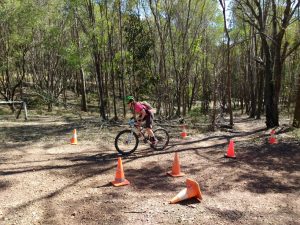 whole race. On the physical side there were the cramps and nausea right from the start, and mentally I was hypervigilant about the other riders around me and fearful that I’d mess up on the technical features. When I finished I only felt relief, and no great desire to repeat the experience. After some time to reflect I became determined not to give in, not to let this beat me, and I had a strong sense that I needed to go back to Chicks in the Sticks this year with a new goal of finding enjoyment in the process of racing.
whole race. On the physical side there were the cramps and nausea right from the start, and mentally I was hypervigilant about the other riders around me and fearful that I’d mess up on the technical features. When I finished I only felt relief, and no great desire to repeat the experience. After some time to reflect I became determined not to give in, not to let this beat me, and I had a strong sense that I needed to go back to Chicks in the Sticks this year with a new goal of finding enjoyment in the process of racing.
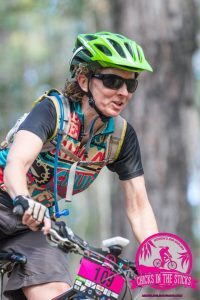

 On my second last lap I had a quick stop for more water and felt a bit disturbed when another rider had a nasty fall. It could have been me. It could have been any of us. I rode more mindfully after that, knowing that I was getting tired and this is when accidents are more likely to occur. On my last lap I wriggled my right toes which had been feeling numb through the race and then the cramp struck me! Repeatedly! But I kept going and was able to laugh it off without falling off! Hmmm…. I thought ….. maybe I didn’t get my nutrition and hydration quite right! But I didn’t care. I hadn’t felt nauseous at all so I knew I’d done better than last year!
On my second last lap I had a quick stop for more water and felt a bit disturbed when another rider had a nasty fall. It could have been me. It could have been any of us. I rode more mindfully after that, knowing that I was getting tired and this is when accidents are more likely to occur. On my last lap I wriggled my right toes which had been feeling numb through the race and then the cramp struck me! Repeatedly! But I kept going and was able to laugh it off without falling off! Hmmm…. I thought ….. maybe I didn’t get my nutrition and hydration quite right! But I didn’t care. I hadn’t felt nauseous at all so I knew I’d done better than last year!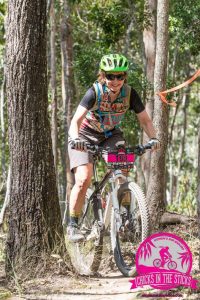

 “Chicks in the Sticks” is an all-female event designed to encourage participation in a friendly and festive atmosphere. I BRAVELY participated last year – it was my first ever MTB event and I surprised lots of people around me by actually having a go! I’m pretty much a scaredy cat on my bike and so this was a really big deal for me – I actually voluntarily registered, paid for and participated in an event with nearly a couple of hundred other people riding repeats of a 6.5 km loop for 3 hours. I actually did it! And although I didn’t get bitten by the “race bug”, I also didn’t want it to stop there. I wanted to learn from my experience by having another go this year and hopefully feel more at ease with the whole scenario.
“Chicks in the Sticks” is an all-female event designed to encourage participation in a friendly and festive atmosphere. I BRAVELY participated last year – it was my first ever MTB event and I surprised lots of people around me by actually having a go! I’m pretty much a scaredy cat on my bike and so this was a really big deal for me – I actually voluntarily registered, paid for and participated in an event with nearly a couple of hundred other people riding repeats of a 6.5 km loop for 3 hours. I actually did it! And although I didn’t get bitten by the “race bug”, I also didn’t want it to stop there. I wanted to learn from my experience by having another go this year and hopefully feel more at ease with the whole scenario. for Chicks in the Sticks. I had every intention of training even better than last year. However ….. life happened! In fact, a lot of life has happened over the past few months and I find myself now only 5 days away from the actual event with basically no preparation, less riding than normal, and still fighting off influenza. Cough, cough.
for Chicks in the Sticks. I had every intention of training even better than last year. However ….. life happened! In fact, a lot of life has happened over the past few months and I find myself now only 5 days away from the actual event with basically no preparation, less riding than normal, and still fighting off influenza. Cough, cough.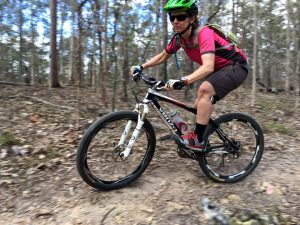 bothered” and “I’m not good enough” thoughts that only serve to make me feel bad. They don’t change the reality, the things I don’t have control over. Giving in to those thoughts doesn’t change my sense of commitment or my intention.
bothered” and “I’m not good enough” thoughts that only serve to make me feel bad. They don’t change the reality, the things I don’t have control over. Giving in to those thoughts doesn’t change my sense of commitment or my intention.
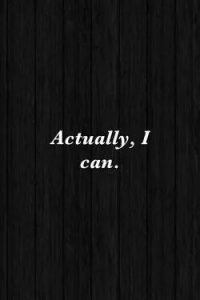 After much soul searching, I made the commitment to myself that I was going to conquer the fear that had irrationally built up in my mind. I really wanted to take charge of my fearful thoughts which seemed to be controlling my actions. It was as if my own thoughts were bullying me. The longer it went on, the worse it became. I knew that if I could get this sorted, I’d be able to transfer the skills and processes to other situations that make me nervous and better manage them as well.
After much soul searching, I made the commitment to myself that I was going to conquer the fear that had irrationally built up in my mind. I really wanted to take charge of my fearful thoughts which seemed to be controlling my actions. It was as if my own thoughts were bullying me. The longer it went on, the worse it became. I knew that if I could get this sorted, I’d be able to transfer the skills and processes to other situations that make me nervous and better manage them as well.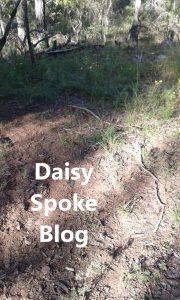
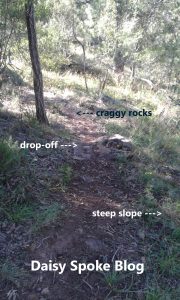

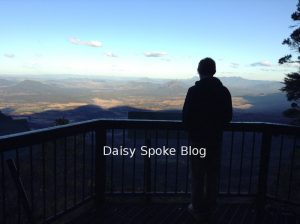 There is growing concern for obesity and other conditions related to sedentary behaviour including chronic illness and poor mental health. Apart from the obvious burden on the nation’s economy, the real burden of poor health is lived out and carried everyday by individuals, families and communities. As a community, I believe we need to creatively explore the possibilities when it comes to getting people active, and not expect individuals to slot into the pre-existing boxes for engaging with physical activities.
There is growing concern for obesity and other conditions related to sedentary behaviour including chronic illness and poor mental health. Apart from the obvious burden on the nation’s economy, the real burden of poor health is lived out and carried everyday by individuals, families and communities. As a community, I believe we need to creatively explore the possibilities when it comes to getting people active, and not expect individuals to slot into the pre-existing boxes for engaging with physical activities. Rural and regional Australia has poorer health outcomes than its urban counterparts, so I’m really keen to make a constructive contribution to the health and wellbeing of my community on the southern Darling Downs, and to encourage women and girls to creatively construct systems and routines so they can enjoy being more active.
Rural and regional Australia has poorer health outcomes than its urban counterparts, so I’m really keen to make a constructive contribution to the health and wellbeing of my community on the southern Darling Downs, and to encourage women and girls to creatively construct systems and routines so they can enjoy being more active.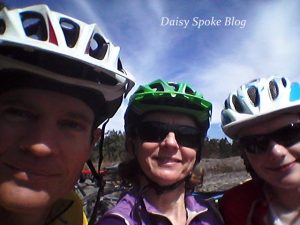 needs – not only women. Times they are a changin’ and the best time for change is now. I’d love to hear ideas from everyone regardless of gender:
needs – not only women. Times they are a changin’ and the best time for change is now. I’d love to hear ideas from everyone regardless of gender:
 So, what are these foundation stones of wellness? There are four main foundation stones that I work on with my clients as well as in my own personal life. Each of the stones support each other – they are interlinked – and they are a fabulous place to start building or renovating wellness at any time! The foundations are based on solid evidence that is routinely used in the mental health sector.
So, what are these foundation stones of wellness? There are four main foundation stones that I work on with my clients as well as in my own personal life. Each of the stones support each other – they are interlinked – and they are a fabulous place to start building or renovating wellness at any time! The foundations are based on solid evidence that is routinely used in the mental health sector. Basically, people are designed to move … a lot. When we don’t move enough, we are at greater risk of switching into a depressed or anxious state. It’s simple biology. Get moving, get active, get off the sofa, and move as much as you can and often as you can. For most of us it’s recommended to aim for about an hour of moderate intensity exercise or activity each day, and limit our screen time to 2 hours per day. The combined mental and physical health benefits of exercise / activity cannot be replaced by any medication. If you are in pain, or have limited movement, injuries, or chronic disease, the best idea is to do what you can. Remember always check with your doctor or health professional if you have any concerns about your health, exercise, and resting needs.
Basically, people are designed to move … a lot. When we don’t move enough, we are at greater risk of switching into a depressed or anxious state. It’s simple biology. Get moving, get active, get off the sofa, and move as much as you can and often as you can. For most of us it’s recommended to aim for about an hour of moderate intensity exercise or activity each day, and limit our screen time to 2 hours per day. The combined mental and physical health benefits of exercise / activity cannot be replaced by any medication. If you are in pain, or have limited movement, injuries, or chronic disease, the best idea is to do what you can. Remember always check with your doctor or health professional if you have any concerns about your health, exercise, and resting needs. 2. Sleep
2. Sleep  3. Nutrition
3. Nutrition 

